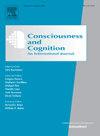与其他研究自发性思维的现象学特征和记忆的方法相比,有声思维过程的有效性
IF 2
3区 心理学
Q2 PSYCHOLOGY, EXPERIMENTAL
引用次数: 0
摘要
人类思维的一个特点是它倾向于产生自发的想法,无论是在任务中还是在空闲的时候。这种现象通常是在实验室里使用思想探测协议(TPP)来研究的,在这个协议中,参与者在不同的时间间隔被提示时报告他们思想的内容。尽管TPP得到了很好的验证,但它仍然存在一些局限性,比如无法追踪探针之间的思想流动。为了解决这些问题,研究人员最近重新审视了有声思考协议(TAP),该协议涉及不断地用语言表达自发的想法。虽然TAP提供了对持续的思想流动的访问,但相对于其他方法,其有效性尚未完全确定。在本研究中,我们比较了四种评估自发思维的方法:TAP、TPP、日常生活经验抽样协议(DLESP)和回顾性思维清单。我们专注于思想的现象学特征和特征,这些特征预测了他们在一天的延迟后的回忆。我们的结果显示,在思维特征和记忆预测方面,TAP和TPP之间的差异很小。然而,用这两种方法报告的思想与用DLESP更生态地评估的思想不同,某些思想特征在回顾性思想清单中被过度代表。总体而言,我们的研究结果表明,TAP与TPP在调查自发思维方面同样有效,尽管在实验室和现实环境中,思维特征可能有所不同。他们还认为,与回顾性评估相比,TAP和TPP等并行报告方法提供了更有代表性的自发思维特征观点。本文章由计算机程序翻译,如有差异,请以英文原文为准。
Validity of the think-aloud procedure in comparison to other methods for studying the phenomenological features and memory of spontaneous thought
A hallmark of the human mind is its tendency to generate spontaneous thoughts, whether during tasks or in idle moments. This phenomenon is typically studied in the laboratory using the Thought-Probe Protocol (TPP), in which participants report the content of their thoughts when prompted at various intervals. Although well validated, the TPP nonetheless suffers from several limitations, such as its inability to track the flow of thoughts between probes. To address these issues, researchers have recently revisited the Think-Aloud Protocol (TAP), which involves the continuous verbalization of spontaneous thoughts. While the TAP offers access to the ongoing flow of thoughts, its validity relative to other methods has not yet been fully established. In this study, we compared four methods for assessing spontaneous thoughts: the TAP, TPP, Daily Life Experience Sampling Protocol (DLESP), and retrospective thought listing. We focused on the phenomenological characteristics of thoughts and features that predicted their recall after a one-day delay. Our results revealed minimal differences between the TAP and TPP in terms of thought characteristics and memory predictors. However, thoughts reported with these two methods differed from those assessed more ecologically with the DLESP, and certain thought features were overrepresented in retrospective thought listing. Overall, our findings suggest that the TAP is as valid as the TPP for investigating spontaneous thought, although thought characteristics may differ between laboratory and real-world settings. They also suggest that concurrent reporting methods, such as the TAP and TPP, provide a more representative view of spontaneous thought features than retrospective assessments.
求助全文
通过发布文献求助,成功后即可免费获取论文全文。
去求助
来源期刊

Consciousness and Cognition
PSYCHOLOGY, EXPERIMENTAL-
CiteScore
4.30
自引率
8.30%
发文量
123
期刊介绍:
Consciousness and Cognition: An International Journal provides a forum for a natural-science approach to the issues of consciousness, voluntary control, and self. The journal features empirical research (in the form of regular articles and short reports) and theoretical articles. Integrative theoretical and critical literature reviews, and tutorial reviews are also published. The journal aims to be both scientifically rigorous and open to novel contributions.
 求助内容:
求助内容: 应助结果提醒方式:
应助结果提醒方式:


